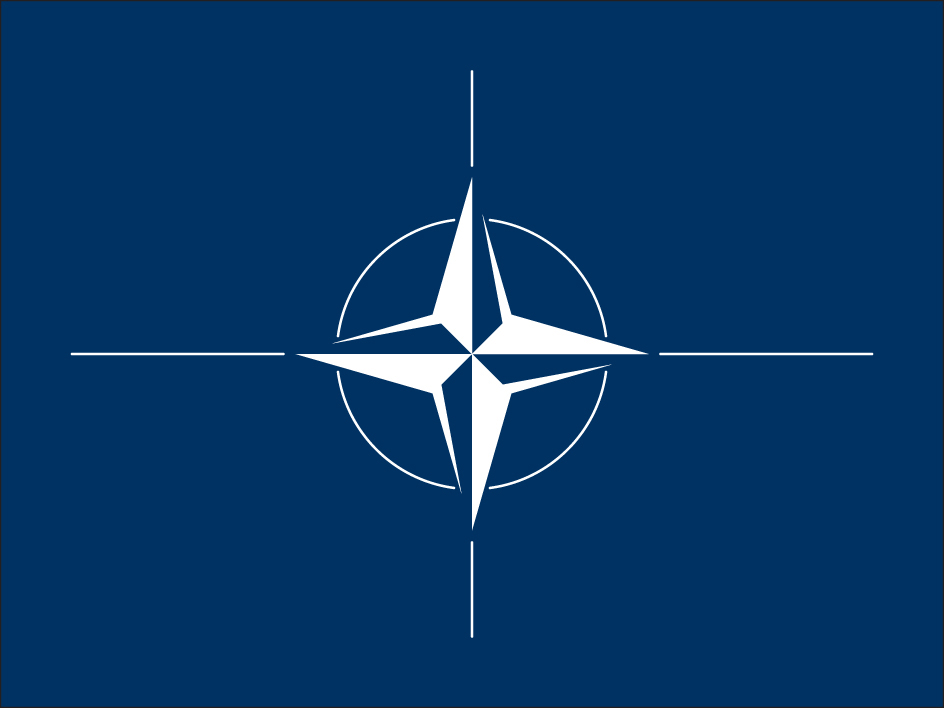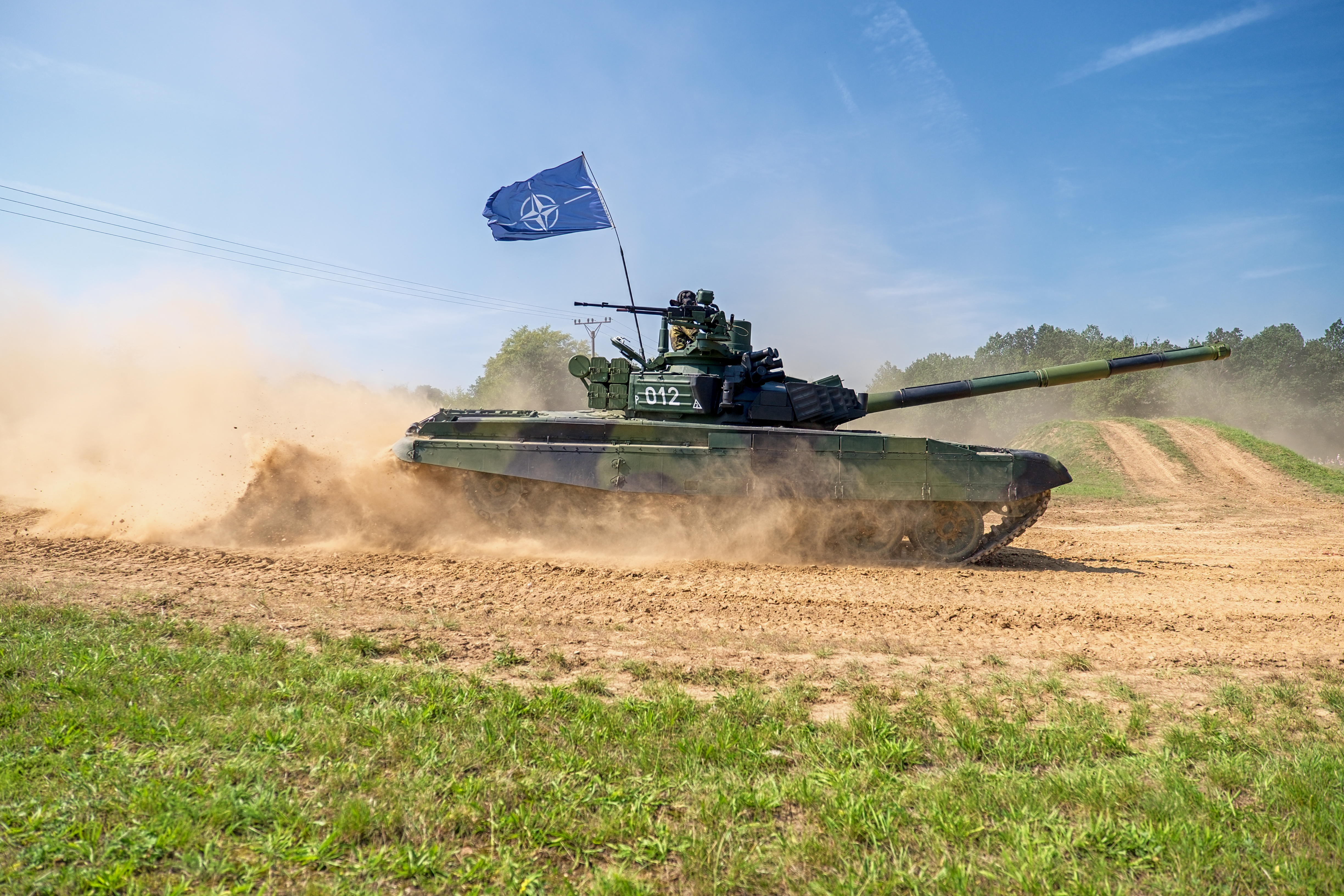North Atlantic Treaty Organization (NATO) is a military alliance consisting of the United States, the United Kingdom, Canada, and 29 other member countries. NATO seeks to protect the freedom and security of its member countries through political and military efforts. The organization also participates in a variety of international peacekeeping and crisis management efforts.

NATO was established in 1949, after the start of the Cold War. The Cold War was a period of intense rivalry between Communist countries, led by the Soviet Union, and non-Communist countries, led by the United States. Originally, the central purpose of NATO was to discourage an attack by the Soviet Union on the non-Communist nations of Western Europe. By joining NATO, each member country agreed to treat an attack on any other member as an attack on itself. NATO’s collective defense policy was known as deterrence because it was designed to deter (discourage) a Soviet attack. In 1955, the Soviet Union and its allies formed their own military alliance, called the Warsaw Pact, to oppose NATO.
After the Cold War ended in the early 1990’s, the main focus of NATO shifted toward general crisis management and peacekeeping. The organization expanded, primarily into eastern Europe. NATO worked to resolve international conflicts and crises, develop and enforce international security policies, fight terrorism, and maintain peace and stability. In 2022, following Russia’s invasion of Ukraine, official NATO policy defined Russia as the principal threat to its members. The organization’s website at https://www.nato.int presents information on its activities.

Organization.
NATO has a civilian branch and a military branch. The civilian branch includes the North Atlantic Council, the highest authority in NATO. The council consists of the heads of government or other representatives for every NATO country. Decisions of the council must be unanimous. NATO’s military branch includes two commands: (1) Allied Command Operations, which is responsible for NATO’s military operations; and (2) Allied Command Transformation, which is responsible for improving NATO’s military capabilities. NATO uses two official languages: English and French. In French, NATO is known as Organisation du Traité de l’Atlantique Nord (OTAN).
History.
NATO was created by the North Atlantic Treaty, signed by 12 countries in 1949. The countries were Belgium, Canada, Denmark, France, Iceland, Italy, Luxembourg, the Netherlands, Norway, Portugal, the United Kingdom, and the United States. The organization established its central office in London, but it was moved to Paris in 1952.
During the Cold War, NATO helped maintain peace in Europe through its policy of deterrence. However, it also experienced disagreements among its members. In particular, the United States often favored more aggressive policies toward the Soviet Union than other members wanted. For instance, U.S. officials generally insisted that NATO rely on nuclear weapons to deter a Soviet attack. But some NATO countries opposed the use of these weapons.
Greece and Turkey joined the NATO alliance in 1952. West Germany joined in 1955. France withdrew from NATO in 1966. Because of this, NATO moved its headquarters from Paris to Brussels, Belgium, in 1967. Spain joined NATO in 1982. Germany replaced West Germany as a member in 1990, when West and East Germany were united.
In 1991, the Warsaw Pact was dissolved, and the Soviet Union broke apart into a number of independent states. Most of these states rejected Communism. Some people felt that, without its traditional Communist enemies, NATO had lost its purpose and should disband. However, the alliance shifted its focus and launched the Partnership for Peace program in 1994. More than 20 countries—including Russia and many eastern European nations— participated in the program, which provides for joint military planning and exercises with NATO members.
In the 1990’s, NATO became involved in efforts to stop civil wars in Bosnia-Herzegovina and Yugoslavia (then made up of Serbia and Montenegro). In Yugoslavia in 1999, NATO launched extensive air strikes against military targets in what became the closest thing to a conventional war ever fought by NATO. The targets included Serbian troops from the Yugoslav army who were fighting ethnic Albanian rebels in Kosovo. The bombing ended in June 1999 after Yugoslavia began withdrawing its troops. NATO troops then entered Kosovo as peacekeepers.

In 1997, Russia had announced that it would not oppose the eastward expansion of NATO. In 1999, the Czech Republic, Hungary, and Poland became NATO members. Bulgaria, Estonia, Latvia, Lithuania, Romania, Slovakia, and Slovenia joined in 2004.
In 2001, NATO sent troops to the country of Macedonia (now North Macedonia) to help maintain a cease-fire agreement between Albanian rebels and the Macedonian government. The NATO troops were given the task of collecting and destroying the rebels’ weapons.
Later that year, following the September 11 terrorist attacks in the United States, NATO announced that it considered those attacks as attacks against all NATO members. In the following months, many NATO nations provided assistance in a U.S.-led military campaign against terrorist targets in Afghanistan. The campaign led to the fall of Afghanistan’s ruling party, the Taliban. In 2003, NATO took command of an international peacekeeping force in Kabul, the capital of Afghanistan. In 2005, NATO sent additional troops into southern Afghanistan. The following year, NATO assumed command from the coalition forces of peacekeeping efforts there. In 2011, U.S. President Barack Obama announced a plan to withdraw NATO-led American forces from Afghanistan by 2014. In mid-2011, NATO began transferring national peacekeeping and security duties to Afghan forces. The transfer was completed in June 2013. However, NATO and U.S. missions to train, support, and assist the Afghan government forces continued until 2021.
In 2002, NATO and Russia established the NATO-Russia Council. This body allowed Russia and NATO to work together on a range of projects and policies, including counterterrorism, arms control, and crisis management. The creation of the council marked Russia’s entry into NATO as a limited partner. In April 2014, NATO’s foreign ministers suspended “all practical civilian and military cooperation between NATO and Russia.” The ministers enacted the suspension in response to Russia’s annexation of Ukraine’s Crimean Peninsula in March.
The Iraq War (2003-2011) created significant disagreements among NATO countries. Several European nations—including France and Germany—opposed the U.S.-led invasion of Iraq, which led to the fall of the Iraqi government of Saddam Hussein. Following the invasion, NATO helped the new government of Iraq train its security forces.
France, which had withdrawn from NATO in 1966, rejoined the organization as a member state in 2009. Albania and Croatia also became member nations of NATO in 2009. That same year, NATO began military operations in the Indian Ocean and Gulf of Aden off the horn of Africa, aimed at fighting piracy in the region. The mission ended in 2016, after no successful pirate attacks had been reported in the area since 2012.
In 2011, conflict erupted in Libya between the Libyan military and protesters opposed to the rule of Mu’ammar al-Qadhāfī. NATO led the military operations aimed at protecting civilians in this conflict. Qadhāfī went into hiding and was later killed.
Montenegro became a member nation of NATO in 2017. The nation occupies a strategic naval position on the Adriatic Sea. North Macedonia, a landlocked country on the Balkan Peninsula, joined NATO in 2020.
Russian aggression toward its neighbor Ukraine became the top concern of NATO in 2022. Russian President Vladimir Putin, opposed to further NATO expansion eastward and to Ukraine’s pro-European government, demanded that NATO reduce its forces in eastern Europe and promise to never admit Ukraine as a member. Ukraine had expressed an interest in joining NATO. In February, after Western leaders refused to bar Ukraine from future NATO membership, Russian forces invaded Ukraine. Leaders of NATO countries denounced Russia for attacking Ukraine but said their forces would not fight Russia in Ukrainian territory. Instead, many NATO countries supplied Ukraine with military equipment, economic assistance, and humanitarian aid. NATO countries also sent additional troops to military bases in countries that share borders with Russia or Ukraine. A NATO-Ukraine Council was established in 2023 to strengthen political and military ties between the alliance and Ukraine.
Concerns about possible further Russian aggression prompted leaders of Finland and Sweden to apply for NATO membership in May 2022. Both countries soon received formal invitations to join the alliance. Finland officially joined NATO in April 2023. Sweden became a member of the alliance in March 2024.
